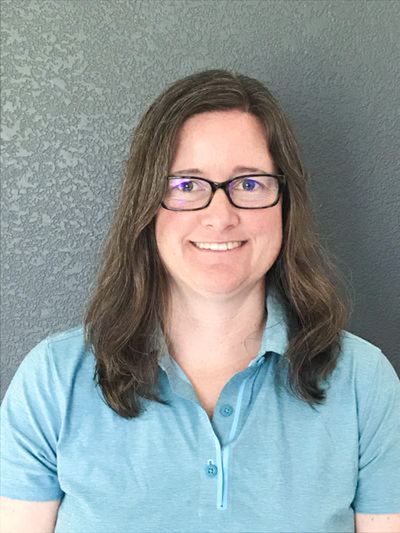Stephanie Basile
Which grade level(s) do you teach?
At the time of the President’s Award [Presidential Awards for Excellence in Mathematics and Science Teaching, 2020], I was teaching 4th grade. The last two years, I have been teaching K-6 computer science and engineering. I teach at Adams 12 Five Star Schools in Northglenn, Colorado.
When did you first hear about ADI?
I started using ADI around 2018 when I took a course through the Denver Museum of Nature and Science. They were hosting it, and I had done a few educator courses through there. They were always great, so I decided to try this one. I really felt ADI brought everything together for me. Before ADI, I was combining parts and pieces from different areas, and it felt like ADI was the whole package where it took the kids through collaborating, problem solving, reflecting, and giving feedback to each other on their work. It gave them a lot of opportunities to work with and communicate on the topic.
How often do you facilitate ADI investigations in a school year?
I used it in 4th grade probably four or five times that year. I purchased the book with the 4th grade lessons in it, and I really enjoyed that. Since I have moved into my new position, I am now looking at how to re-incorporate it into the engineering and computer science contents.
What advice would you give to a teacher new to ADI?
I would say to try it through the whole process. Be okay going a little slower, because you’re training the kids on that process. Things can go faster as you start doing more, and they’re going to get better at it. Go slow to go fast. You experience it, and they experience it, through all the stages. Once the students have the process down, the format of the lessons gets easier for them.
What do your student enjoy most about ADI?
Using technology with it to be able to share their presentations and look more formal. They really love the part with the whiteboards. Having them use different colors, seeing who is doing what, breaking up the process and getting a lot more opportunities to talk about their thinking and hearing each other's thinking.
How does ADI support the initiatives at your STEM campus/district?
The lessons are a lot more student-led and the students are doing the scientific thinking. The students are making choices in what data they’re going to collect and how they’re going to collect it. There’s choice obviously in how you scaffold that for your students. It’s less cookie-cutter.
Can you share about the ADI lesson you used for the President’s Award?
It was a 4th grade one on circuits. They are learning about binary codes, sending information to each other, having to transcribe that, and collecting data on how accurate that was. I chose that one, and I really like it, because it was the application of the science. We were learning about how to make circuits and how to connect positives and negatives, and the ADI lesson included the why are we learning this. I think that’s another great thing that ADI does with a lot of their lessons is making them applicable to why do we care, why do we learn this, and the real-world application of how this might be used.
Any general thoughts or feedback?
This is everything, this is how I teach, and it’s everything put together. It’s less thought in the front end of what I need to do.

